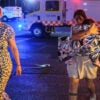Sometimes judicial activism isn’t about who wins the case.
It may be that the Supreme Court got it right today when it ruled that school officials violated the constitutional rights of 13-year-old Savana Redding when they ordered her to shake out her underwear to see if she was hiding more of the prescription pain pills found on a schoolmate. But one thing it didn’t do is provide any kind of guidance for school officials who now face the prospect of liability for violating this new rule… whatever it is. This is what happens when judges allow their policy preferences to leak into opinions, rather than strictly adhering to the text of the Constitution and the law.
The opinion, a typically inscrutable one by the famously private Justice Souter, begins by stating that that “reasonable suspicion,” not “probable cause” as in criminal law, is the standard to determine the legality of a school official’s search of a student. This standard requires that there be “a moderate chance of finding evidence of wrongdoing.” This is new. Does it count as a “moderate chance” that in some school districts, upending nearly any student would cause an array of illicit substances to pour from his or her pockets?
But that’s not the end of the inquiry. In some cases (which ones are unclear), “subjective and reasonable societal expectations of personal privacy… requir[e] distinct elements of justification.” This sounds a lot like a Fourth Amendment analysis in criminal law, except that here, unlike in a criminal case, the standard for justification is lower (as Souter stated earlier) and no warrant is required to conduct the search, because the purpose of the search is not to make an arrest but to protect schoolchildren. This requirement imposes what seems to be an additional standard, above and beyond the “moderate chance” requirement: “the content of the suspicion [must] match the degree of intrusion.”
How does one determine this? There’s no explanation, but Justice Souter runs through several factors in this case. First, the school officials knew that the prescription drugs that they had found so far were “nondangerous.” But actually, according to the record, the school officials took the opposite position: they had heard that students were taking all kinds of prescription drugs, basically anything they could find in their parents’ medicine cabinets, and so drew a clear line: if it’s a prescription, it’s potentially dangerous and therefore contraband. This is, of course, where criminal law draws the line, too—a person could be arrested, charged, and imprisoned for a variety of offenses involving the very pills in this case. The school also had another reason to worry: another student had nearly died several months prior after taking an illicit prescription drug. All that, however, is not enough to prove that school officials had a good reason to be concerned.
Second, explains Souter, the school officials had no reason to believe that there were many pills in circulation. Except, that is, that they had heard that lots of students were abusing prescription drugs and had been tipped off that a group of students planned to pop pills at lunchtime. So it might also be fair to say that they had no reason to believe that there were few pills in circulation. Either way.
And third, they had no reason to suspect that Redding, who had been fingered by a friend as the source of the pills, was holding any of them in her underwear. Then again, the officials had no specific reason to believe that any pills were in her pockets or backpack, both of which the Court said were OK to search. So why is underwear off-limits, but not these other things? Yes, underwear is different from a backpack and outerwear, but aren’t they all alike in that they’re easy hiding spots for things like pills? That, however, is apparently not what this factor is about.
One more wrinkle: unlike in the Court’s previous cases, these standards have to be applied at each step of a search. It’s not enough, as previously, for a search to be “justified at its inception” and “permissible in scope.” Officials now have to satisfy two separate standards, with multiple factors, every step of the way. It’s just like that crazy kissing policy at Antioch College.
All this is enough to make one sympathetic to Justice Thomas’s view that the Fourth Amendment simply does not cover this kind of situation. As he would have it, school policies, made by elected officials, school boards, and principals, are where the action should be. Not the courtroom, where rules are made by judges who don’t have to live with their consequences.
Anyway, school officials: Good luck. You’ll need it!































3 Replies to “Activism in Action: The Middle School Strip Search Case”